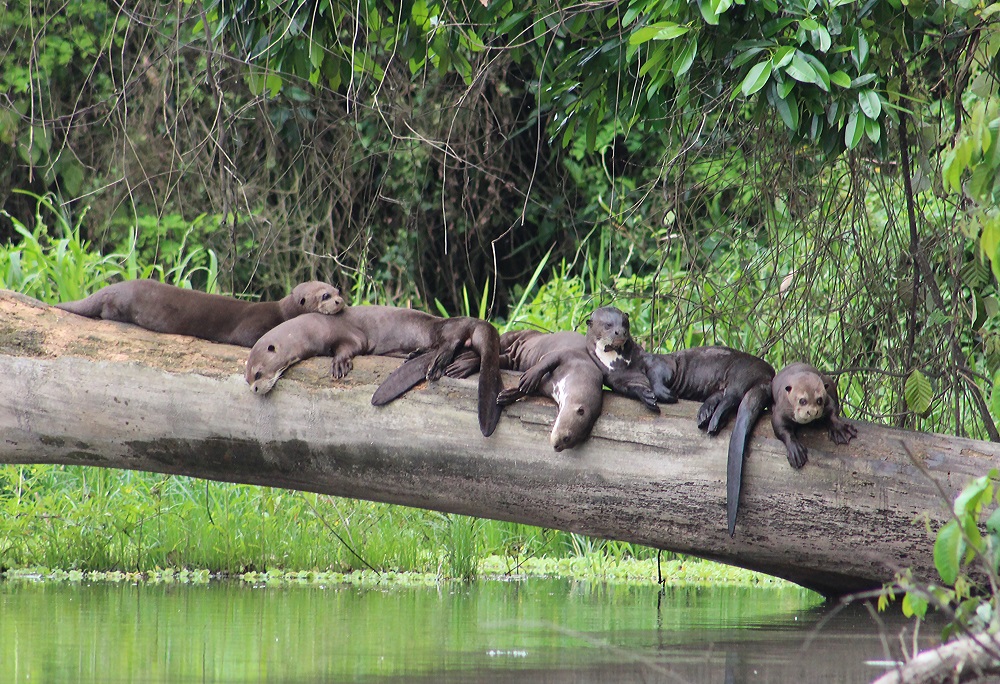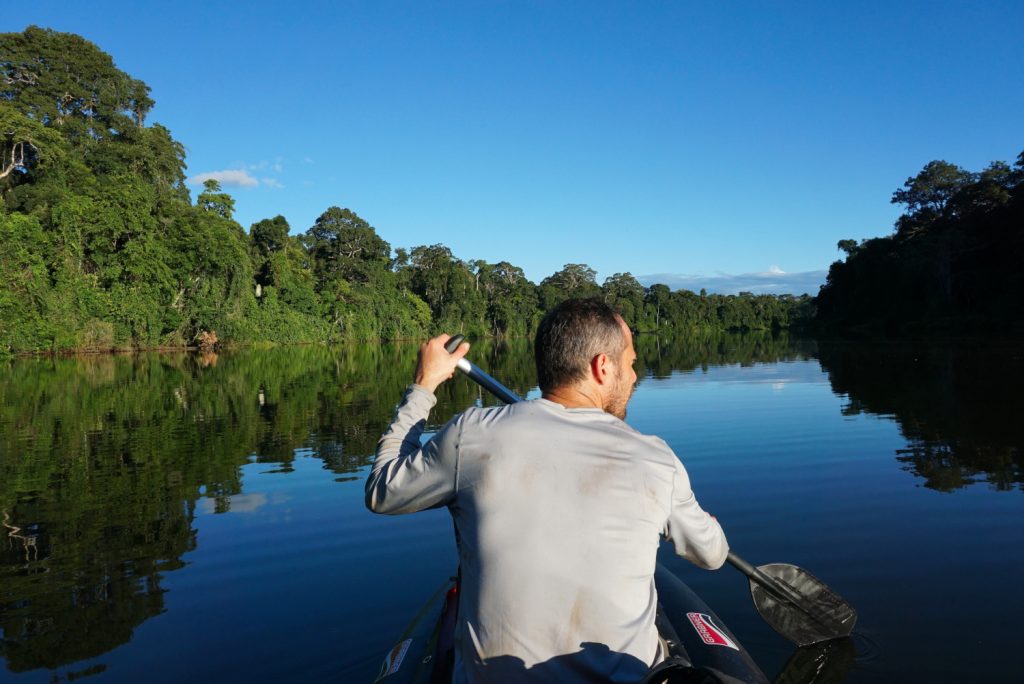By Adi Barocas
The giant otter (Pteronura brasiliensis) is an Endangered apex carnivore inhabiting the Madre de Dios region in Peru’s Amazon basin. Despite a recent recovery in some areas following banning of the fur trade, the species now faces several emerging threats that remain poorly understood. These include illegal gold mining using mercury as well as conflict with fishermen. To sustain the recovery of giant otter populations, a proactive understanding of the ecological factors supporting them, and anthropogenic impacts threatening them, is required. Together with the Wildlife Conservation Research Unit (WildCRU/University of Oxford), in May 2017, San Diego Zoo Global embarked upon a systematic investigation of factors regulating otter populations, coupled with engagement of local communities to offset activities that negatively impact otters, and working with local government agencies to adopt effective management practices. The scope of our program encompasses large portions of the Madre de Dios watershed inside and outside protected areas.

Lead researcher, Adi Barocas, and his team of Peruvian assistants have begun monitoring 8 giant otter groups (42 individuals) in mined areas and an additional 9 groups in protected areas (>40 individuals). They have compiled a photo ID library with 63 identified individuals and begun evaluation of water quality and collection of fish, water, and sediment samples for mercury analysis. They are also conducting bird and reptile community surveys and have established strong collaborative relationships with the Peruvian Service for Natural protected Areas (SERNANP), Wake Forest University, the Frankfurt Zoological Society, Manu National Park, the Centre for Scientific Innovation in Amazonia, and local communities such as Isla de los Valles, where they are assisting SePeru, a local NGO, with a responsible giant otter ecotourism program.
Vision: After five years we will have gained important insights into giant otter population ecology in relation to resource abundance and availability, gold mining, and community land management, thus enabling better integration of giant otter conservation needs with regional development and protected area management.
Our objectives are that by the end of 2023:
- The degree of mercury contamination in otters, their fish prey, and their aquatic environment will be characterized across several oxbow lakes that vary in their proximity to mining activities.
- Ecological and anthropogenic factors that influence otter health, reproduction, and survival will be better understood.
- Human communities that depend on oxbow lakes for fishing and other activities will have an understanding of the risks of mercury contamination and will be better stewards of the aquatic ecosystem on which they and wildlife depend.
- Park and regulatory authorities will have a scientific foundation for better managing aquatic resources in Madre de Dios.
- In-country capacity to conduct conservation and research activities with otters and aquatic ecosystems will allow continued conservation action with minimal outside assistance.
- The rate of destruction of oxbow lakes will be curtailed and some otter populations outside protected areas will be safeguarded from mining and other human disturbance.
- Our findings will have been communicated to the conservation community so that managers and decision-makers in other regions can benefit from lessons learned.
Please contact Adi Barocas if you are interested in learning more about our giant otter program.

